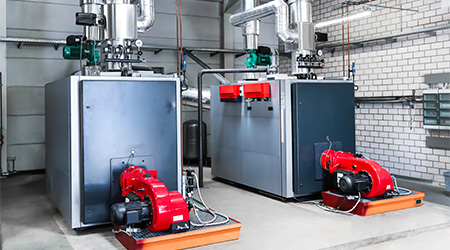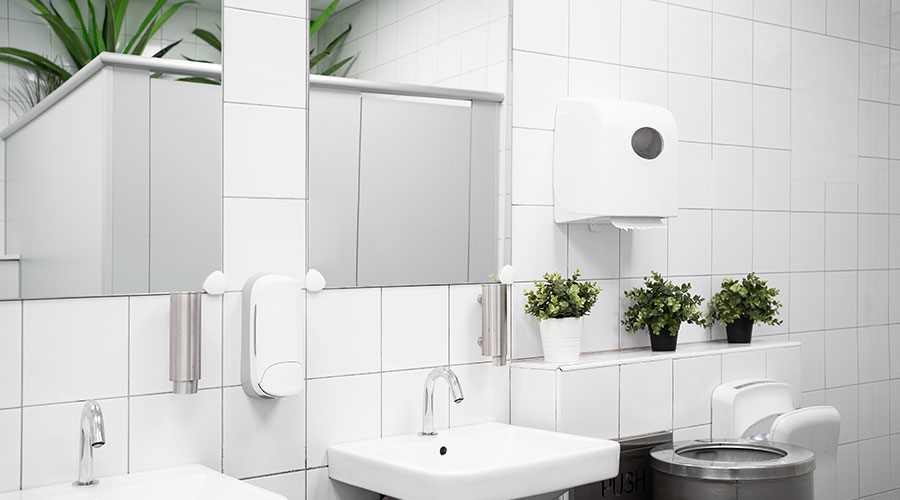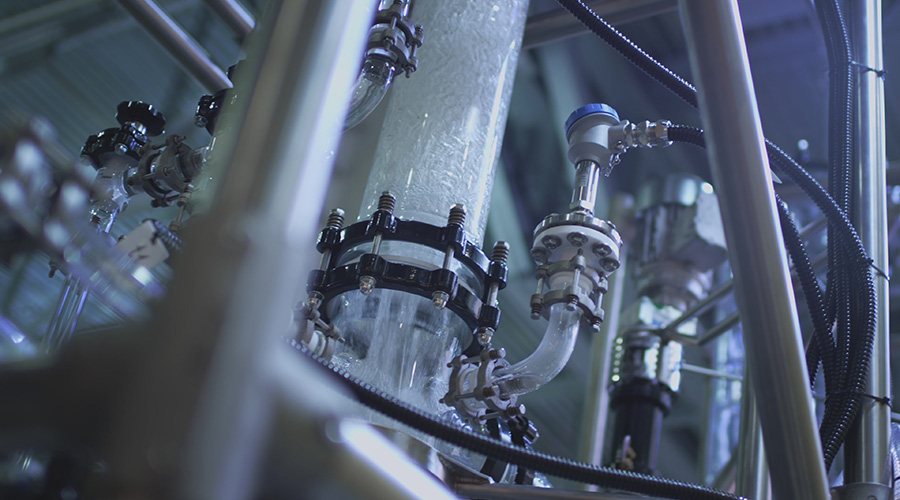Understanding Water-Conservation Strategies for Reopening Facilities
These water efficiency tactics and strategies to preserve water also can increase overall efficiency and lower maintenance costs.
With occupants of institutional and commercial offices slowly returning to their offices, one challenge for maintenance and engineering managers amid ongoing concerns about COVID-19 transmission is keeping other long-term priorities top of mind. One such issue is sustainability — specifically, water conservation.
Water conservation in facilities has been preached for decades but often is not at the forefront of people’s sustainability efforts. Turning the faucet off when you are brushing your teeth or shaving saves a couple of gallons per day per person, but compared to the overall water consumption in the U.S. facilities, it’s peanuts.
By taking a closer look at the operations of cooling towers, boilers and plumbing systems, managers can implement upgrades and retrofits that help their organizations conserve water and hold down utility costs.
Looking for trouble
Identifying locations where water is being wasted in institutional and commercial facilities is easy to say, but it often is the hardest task for managers. It is often like hunting for a ghost. The first and easiest area to optimize overall water savings is during the design phase.
The traditional lifecycle of a building is that once it is constructed, turnover takes place, and the only time updates occur is when equipment fails. It can take 20 years or more for a building to start changing out equipment. That is the reason additional effort and time designing systems are imperative for the overall efficiency of systems.
If the building already has been constructed and is in operation, monitoring water use is the most effective strategy for managers to identify excessive water usage. Installing a flow meter on every major component to gather water-use data will indicate losses over time.
Cooling towers, boilers, and lack of insulation on domestic hot water piping are major contributors to water loss in every building.
Cooling towers have numerous ways of losing water, including evaporation, drift, blowdown, and faulty operation. Evaporation happens because the cooling tower is trying to transfer heat from the building and dispose of it into the environment. Loss from evaporation can be mitigated, but loss of overall efficiency will most likely arise.
Drift is the small water droplets cooling towers make that people often mistake for mist. This is usually controlled by using baffles. Blowdown is necessary because water contains dissolved solids. As evaporation takes place, the accumulation of these solids can lead to scale, corrosion, and lower thermal conductivity. By blowing down cooling towers, highly concentrated water is replaced with fresh makeup water, and the water expelled out of the system is a complete loss.
To maximize the lifetime of the water in the cooling tower, building operators should test the total dissolved solids (TDS) of the blowdown water and compare it to the TDS of the make-up water. By testing for TDS, operators can determine if the cooling towers are being blown down too often. Consulting with the cooling tower manufacturer and a water treatment specialist will help determine if less frequent blowdowns are allowed.
Increasing the cycle interval between blowdowns from four to eight reduces make-up consumption by 20 percent and blowdown wastewater by 50 percent. The time interval is strictly dependent on evaporation rate, quality of make-up water, and chemical dousing.
The final potential loss of water from a cooling tower is overflow. This should never happen if the system is properly maintained and floats are tested regularly.
Spotlight on boilers
Water losses related to boiler operations result primarily from blowdowns and improper combustion, leading to excessive buildup within the boiler. Managers and operators can address blowdowns the same way they do cooling tower blowdowns. With proper chemical dousing and monitoring, the facility will be able to optimize when blowdowns are necessary.
Improper combustion leads to a handful of issues, including an excessive amount of water being wasted because many boilers use steam to clean the boiler. Most boilers feature oxygen sensors to detect flue gas leaving the boilers, so the operators should keep an eye on them. Proper boiler automation will reduce the amount of carbon buildup in boilers, saving water and increasing overall efficiency.
A lack of proper insulation on domestic hot water piping also leads to wasting water when occupants use the facility and have to wait for the water to get warm. Proper insulation also can increase overall efficiency of the system, leading to energy savings.
If the system is already insulated and there is still a noticeable drop in water temperature, the piping run might be too long. The solution to this situation can involve adding instantaneous water heaters throughout the building. Another potential solution is to have a hot water loop throughout the building with constant circulating water. If managers choose this option, additional focus on insulation is recommended to reduce energy loss.
Efficiency solutions
For managers looking to modify existing plumbing and HVAC components and systems to conserve water, the answers also result from proper monitoring and effective automation. For cooling towers, conductivity controllers can be installed to automatically perform blowdowns only when a preset setpoint is reached. Having an automatic chemical treatment system also can reduce the number of blowdowns and the cost of chemicals.
They also can install flow meters on make-up and blowdown to measure the amount of water used. Trending this data over the lifetime of the tower also can help in identifying potential leaks or additional losses that arise during years of operation. Retrofit options consist of installing a side-stream filtration system to collect the suspended solids and return the filtered water to the system. Installing a sun guard to protect the cooling tower from sunlight might limit biological growth, resulting in fewer blowdowns.
Boilers are similar to cooling towers in terms of preventive and proactive water-saving strategies. Installing a flow meter on make-up and blowdown while trending the data and comparing from previous points can indicate leaks. Effective TDS testing also can limit the number of blowdowns. Investing additional money in high-quality combustion measuring devices will cut costs related to fuel and water use.
For domestic hot water systems and components, the potential remedy is to insulate exposed hot water piping. The tactic is low-cost, and the returns will be apparent almost immediately, with savings coming from fuel and water use.
Cooling tower automation systems can help cut costs related to blowdowns. Managers also should consider reaching out to the utility provider, many of whom do not make customers pay for sewage treatment related to evaporative losses. Evaporative losses are calculated by measuring the make-up feed and subtracting the blowdown amount. This strategy can help to pay off the metering devices, depending on the size of the plant and the cost of water.
Managers also can curtail water use among boilers by having operators trend use data and locate leaks well before they become a larger problem. Proper monitoring of systems and proper maintenance can result in substantial savings.
For most organizations and executives, the top priority is the bottom line. Water conservation alone would be a hard sell to owners, but often the strategies to preserve water also can increase efficiency and lower maintenance costs.
While going back to the office no doubt will present challenges for occupants and managers, by implementing these strategies and tactics, managers will be in a better position to minimize challenges related to sustainability.
Panagiotis Petkanas is a field engineer with Horizon Engineering Associates and has extensive experience in the construction industry.
Related Topics:












